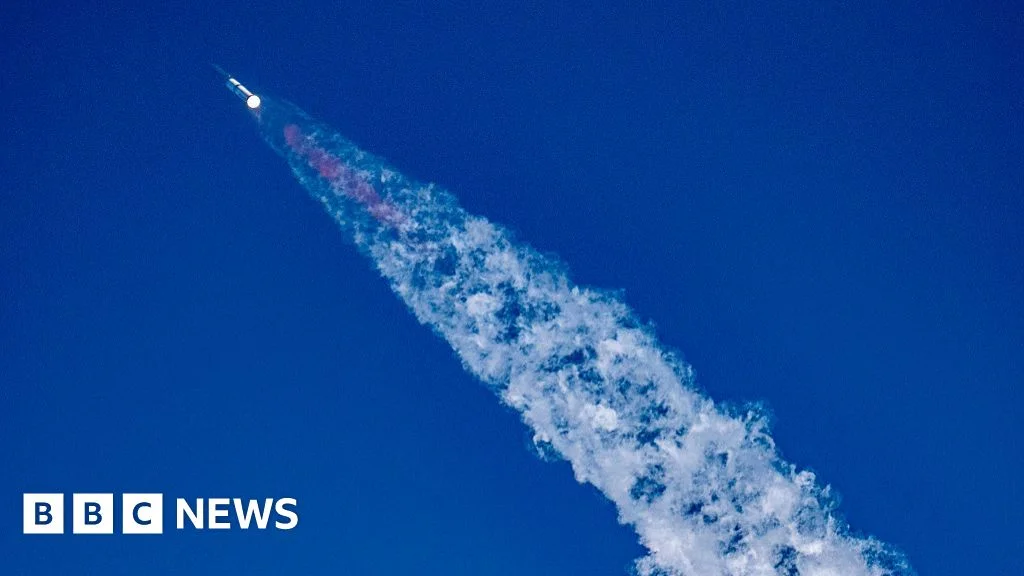
SpaceX’s Starship Flight 9: Progress Amidst Fiery Setbacks – What’s Next?
SpaceX's Starship, the most powerful rocket ever built, recently completed its ninth test flight, achieving some milestones but ultimately ending in another fiery "rapid unscheduled disassembly." This latest mission underscores the challenges and ambitions of Elon Musk's space venture, raising questions about future timelines and the feasibility of sending humans to Mars.
The launch, which took place from SpaceX's Starbase in Texas, initially showed promise. The Starship reached its scheduled engine cutoff--major progress over the previous two attempts. According to Elon Musk himself, there was "no significant loss of heat shield tiles during ascent." However, issues quickly emerged after separating from the Super Heavy booster.

"We've essentially lost our attitude control with Starship," a SpaceX commentator noted during the live broadcast. A propellant leak led to the Starship spinning out of control and breaking apart during re-entry into Earth's atmosphere, with debris falling into the Indian Ocean. The Super Heavy booster also failed to execute a controlled splashdown in the Gulf of Mexico.
One critical failure was the inability to maintain the Starship's "attitude control - it's pointing direction - during the orbital coast," according to Harvard-Smithsonian Center for Astrophysics astronomer, Dr. Jonathan McDowell.
Despite the setbacks, some progress was made. The mission successfully used a previously flown booster, marking a significant step towards fully reusable rockets. But several planned tests, including the deployment of mock Starlink satellites, were not conducted due to a payload door malfunction.
SpaceX operates on a "fail fast, learn fast" principle. However, repeated costly failures raise concerns about long-term reliability and safety, particularly given the ambitious goal of sending humans to Mars.
Dr. Leah-Nani Alconcel, a spacecraft engineer at the University of Birmingham, told the BBC, "Each Starship launch is substantially more expensive than the Falcon launches were...Its primary aim is to send humans to Mars...a goal which is predicated on the development of a market that doesn't exist yet, and therefore represents a bigger financial risk."
Nasa plans to use Starship as part of its Artemis programme, aiming for a crewed flight by mid-2027. However, Dr. McDowell suggested that Starship might not be ready for a crewed mission to the moon for many more years. He also added in the space game, we talk about 'Elon Time'. If he says he's going do something in one year, make a note in your calendar for three years now".
Despite rivals like Blue Origin gaining ground, "No one else is even trying something on the scale of Starship," Dr. McDowell noted. If SpaceX can make it work, it will solidify its position as an industry leader.
Looking ahead, Musk has announced plans for faster-paced testing, with subsequent launches scheduled every three to four weeks. However, realistic timelines remain uncertain.
Will SpaceX overcome these challenges and realize its grand ambitions? Or will the repeated setbacks delay or even derail the dream of interplanetary travel? Share your thoughts in the comments below.
Related issues news
What happened on Starship Flight 9?
But halfway through its uncrewed journey, the spacecraft sprang a propellant leak. That caused it to start spinning out of control. The Starship vehicle used in the test flight was not able to survive the intense heat, breaking up as it fell back into the atmosphere.
What time is the SpaceX starship launch?
SpaceX's massive rocket is lined up for its ninth uncrewed test flight, with the 60-minute launch window opening at 7:30 p.m. ET.
Was Starship Flight 9 a success?
SpaceX's ninth Starship test flight ended in failure. The mission aimed to deploy eight Starlink simulator satellites and test reentry with 100 heat shield tiles intentionally removed. The payload door failed to open during the flight.